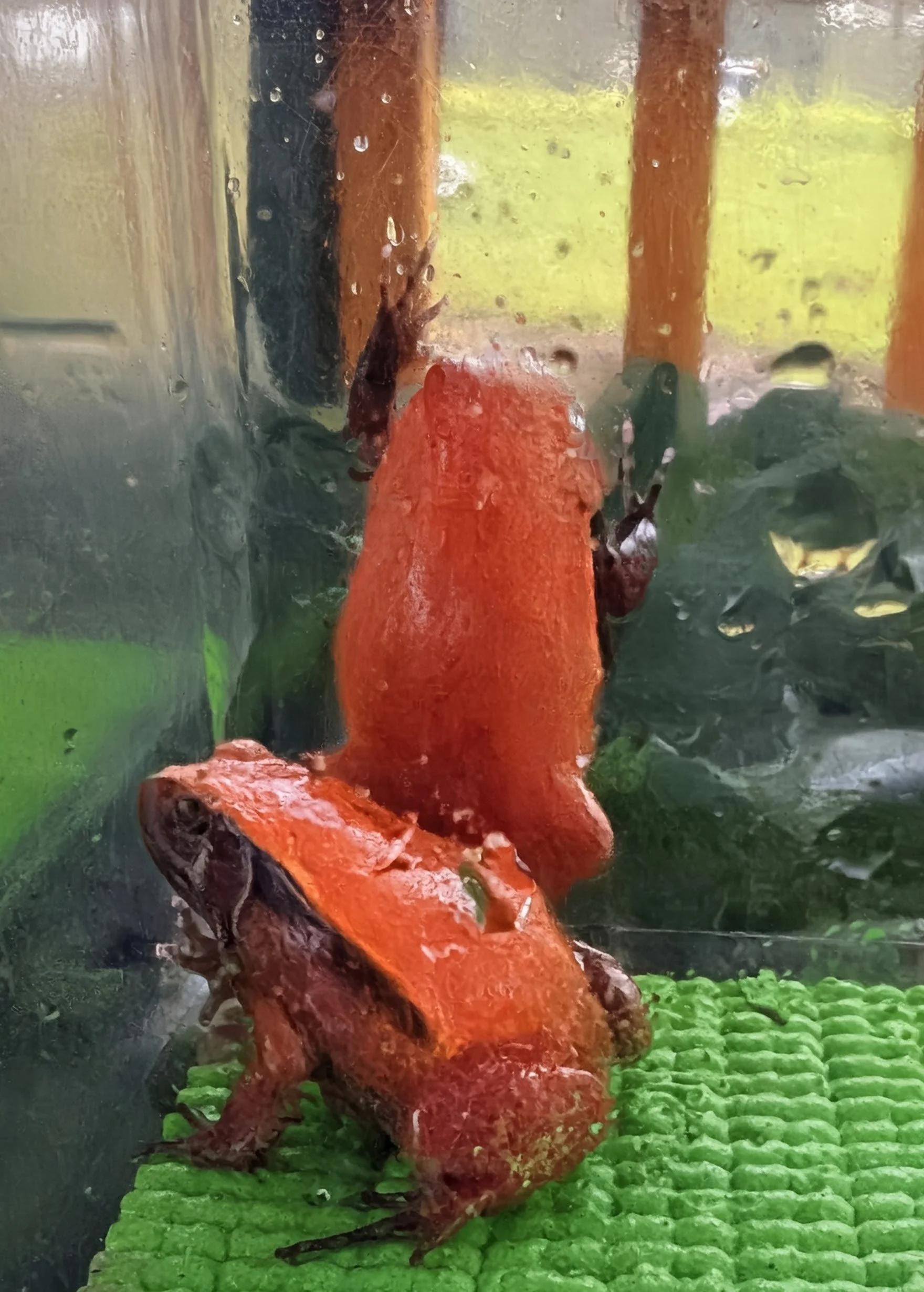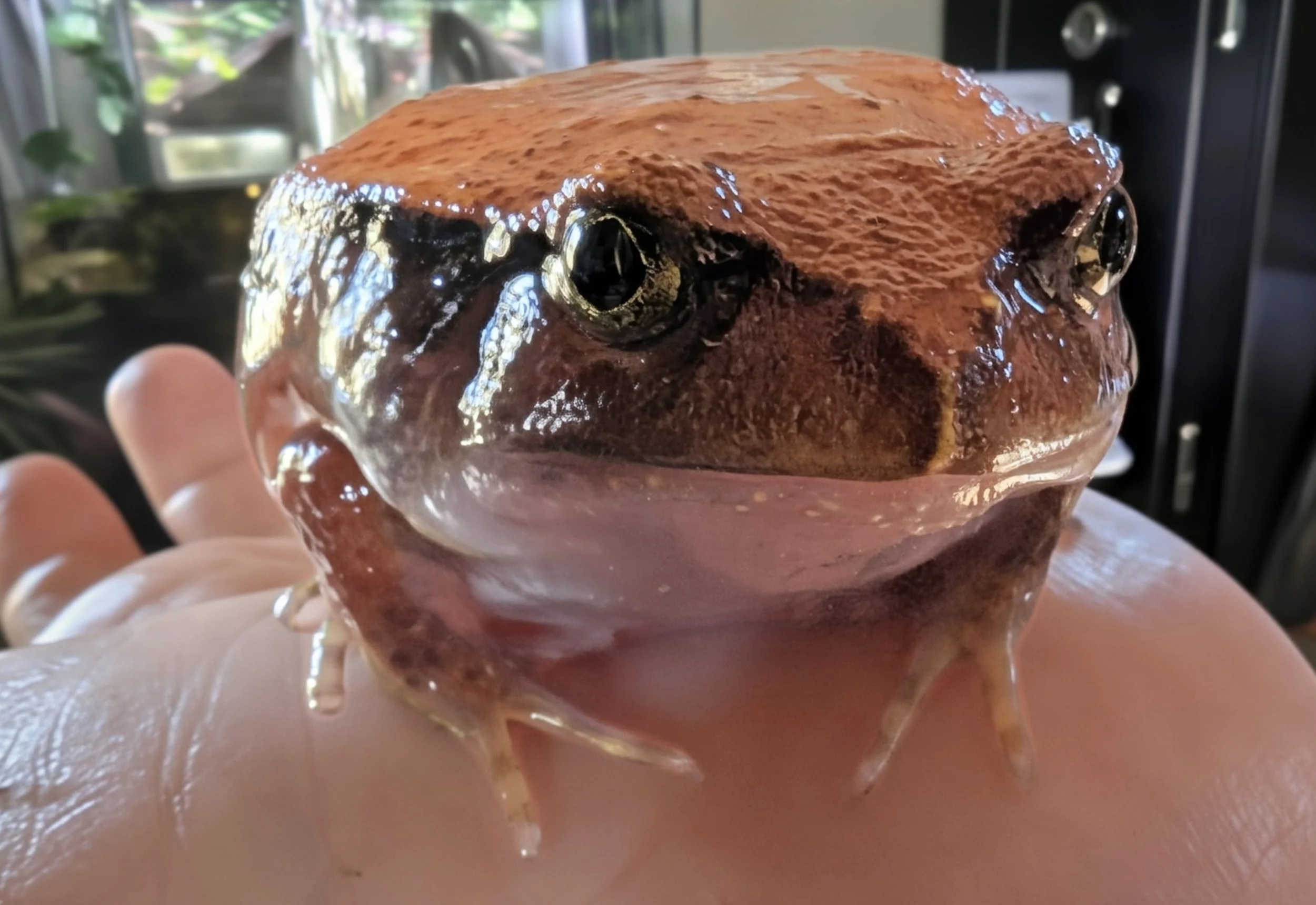Tomato frogs
(Dyscophus spp.) are colorful, round-bodied amphibians native to Madagascar. They’re well-loved in the pet trade and fascinating for their bold defenses.
General Overview
Scientific name: Dyscophus guineti, Dyscophus antongilii, and Dyscophus insularis
Common name: Tomato frog
Native range: Northeastern Madagascar, especially near marshes, swamps, and rainforests
Lifespan: 6–10 years in captivity
Size: 2.5–4 inches (females are larger than males)
Appearance
Bright red-orange to orange-yellow coloration—hence the name "tomato frog."
Females are more vividly red, while males are usually yellow-orange.
Sometimes display dark spots on the back or sides.
Plump body with short limbs, smooth skin, and a round, squat appearance.
Behavior & Natural History
Defense mechanism: When threatened, they secrete a sticky, white toxin through their skin that can gum up a predator’s mouth and cause irritation.
Diet: Insects, worms, and other small invertebrates. They’re sit-and-wait predators, lunging quickly at passing prey.
Activity: Mostly nocturnal; during the day they hide under leaf litter, mud, or vegetation.
Reproduction: Breeding occurs during the rainy season. Males call with a deep, nasal croak to attract females, and females lay eggs in shallow water.
Captive Care Highlights
Enclosure: A 10–20 gallon terrarium with deep, moist substrate for burrowing and lots of leaf litter.
Humidity: High (60–80%), with regular misting.
Temperature: 70–80°F.
Feeding: Mainly insects like crickets, roaches, and worms.
Handling: Should be avoided—their skin secretions can irritate human skin, and handling stresses the frog.
Conservation & Fun Facts
Some species, like Dyscophus antongilii, are considered near threatened due to habitat loss and collection for the pet trade.
Their bright red coloration is a form of aposematism—a warning to predators that they are toxic.
Despite their toxicity to predators, they are harmless when admired from a distance and make striking educational animals.




